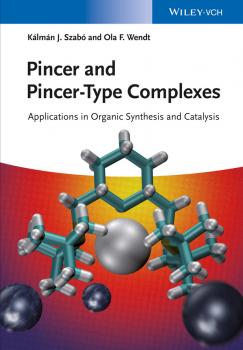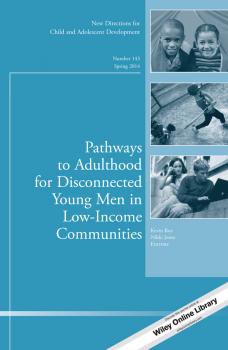Прочая образовательная литература
Различные книги в жанре Прочая образовательная литератураPincer and Pincer-Type Complexes. Applications in Organic Synthesis and Catalysis
This new book on this hot topic summarizes the key achievements for the synthesis and catalytic applications of pincer and pincer-type complexes, providing readers with the latest research highlights. The editors have assembled an international team of leaders in the field, and their contributions focus on the application of various pincer complexes in modern organic synthesis and catalysis, such as C-C and C-X bond forming reactions, C-H bond functionalization, and the activation of small molecules, as well as asymmetric catalysis. A must-have for every synthetic chemist in both academia and industry intending to develop new catalysts and improved synthetic protocols.
Fuels, Chemicals and Materials from the Oceans and Aquatic Sources
Fuels, Chemicals and Materials from the Oceans and Aquatic Sources provides a holistic view of fuels, chemicals and materials from renewable sources in the oceans and other aquatic media. It presents established and recent results regarding the use of water-based biomass, both plants and animals,for value-added applications beyond food. The book begins with an introductory chapter which provides an overview of ocean and aquatic sources for the production of chemicals and materials. Subsequent chapters focus on the use of various ocean bioresources and feedstocks, including microalgae, macroalgae, and waste from aquaculture and fishing industries, including fish oils, crustacean and mollusc shells. Fuels, Chemicals and Materials from the Oceans and Aquatic Sources serves as a valuable reference for academic and industrial professionals working on the production of chemicals, materials and fuels from renewable feedstocks. It will also prove useful for researchers in the fields of green and sustainable chemistry, marine sciences and biotechnology. Topics covered include: • Production and conversion of green macroalgae • Marine macroalgal biomass as an energy feedstock • Microalgae bioproduction • Bioproduction and utilization of chitin and chitosan • Applications of mollusc shells • Crude fish oil as a potential fuel
Pathways to Adulthood for Disconnected Young Men in Low-Income Communities. New Directions for Child and Adolescent Development, Number 143
As the chapters in this volume demonstrate, young, disadvantaged men from urban neighborhoods face a unique set of challenges and constraints as they transition to adulthood. Yet, these challenges are not always contained by place. Research among Latino and White disadvantaged men in nonurban settings highlights the pressures that come along with fatherhood for disadvantaged men. In contrast to popular understandings of absent or disengaged fathers, findings reveal how fatherhood and increasing levels of interdependence during early adulthood can buffer men as they make the difficult transition to adulthood. The innovative field-based research featured in this volume illuminates the contexts, processes, and meanings in life pathways for disadvantaged men as they move from adolescence into adulthood and should help to inform policies and practices directed at minimizing their marginalization from mainstream society. This is the 143rd volume in this series. Its mission is to provide scientific and scholarly presentations on cutting edge issues and concepts in child and adolescent development. Each volume focuses on a specific new direction or research topic and is edited by experts in that field.
The Evolution of Meteorology. A Look into the Past, Present, and Future of Weather Forecasting
The essential guide to the history, current trends, and the future of meteorology This comprehensive review explores the evolution of the field of meteorology, from its infancy in 3000 bc, through the birth of fresh ideas and the naming of the field as a science, to the technology boom, to today. The Evolution of Meteorology reveals the full story of where meteorology was then to where it is now, where the field is heading, and what needs to be done to get the field to levels never before imagined. Authored by experts of the topic, this book includes information on forecasting technologies, organizations, governmental agencies, and world cooperative projects. The authors explore the ancient history of the first attempts to understand and predict weather and examine the influence of the very early birth of television, computers, and technologies that are useful to meteorology. This modern-day examination of meteorology is filled with compelling research, statistics, future paths, ideas, and suggestions. This vital resource: Examines current information on climate change and recent extreme weather events Starts with the Ancient Babylonians and ends with the largest global agreement of any kind with the Paris Agreement Includes current information on the most authoritative research in the field of meteorology Contains data on climate change theories and understanding, as well as extreme weather statistics and histories This enlightening text explores in full the history of the study of meteorology in order to bring awareness to the overall path and future prospects of meteorology.
Accreditation, Certification, and Credentialing: Relevant Concerns for U.S. Evaluators. New Directions for Evaluation, Number 145
This is the 145th issue in the New Directions for Evaluation series from Jossey-Bass. It is an official publication of the American Evaluation Association.
Pumps, Channels and Transporters. Methods of Functional Analysis
Describes experimental methods for investigating the function of pumps, channels and transporters Covers new emerging analytical methods used to study ion transport membrane proteins such as single-molecule spectroscopy Details a wide range of electrophysiological techniques and spectroscopic methods used to analyze the function of ion channels, ion pumps and transporters Covers state-of-the art analytical methods to study ion pumps, channels, and transporters, and where analytical chemistry can make further contributions
Contemplative Practices in Higher Education. Powerful Methods to Transform Teaching and Learning
Contemplative pedagogy is a way for instructors to: empower students to integrate their own experience into the theoretical material they are being taught in order to deepen their understanding; help students to develop sophisticated problem-solving skills; support students’ sense of connection to and compassion for others; and engender inquiries into students’ most profound questions. Contemplative practices are used in just about every discipline—from physics to economics to history—and are found in every type of institution. Each year more and more faculty, education reformers, and leaders of teaching and learning centers seek out best practices in contemplative teaching, and now can find them here, brought to you by two of the foremost leaders and innovators on the subject. This book presents background information and ideas for the practical application of contemplative practices across the academic curriculum from the physical sciences to the humanities and arts. Examples of contemplative techniques included in the book are mindfulness, meditation, yoga, deep listening, contemplative reading and writing, and pilgrimage, including site visits and field trips.
Spin States in Biochemistry and Inorganic Chemistry. Influence on Structure and Reactivity
It has long been recognized that metal spin states play a central role in the reactivity of important biomolecules, in industrial catalysis and in spin crossover compounds. As the fields of inorganic chemistry and catalysis move towards the use of cheap, non-toxic first row transition metals, it is essential to understand the important role of spin states in influencing molecular structure, bonding and reactivity. Spin States in Biochemistry and Inorganic Chemistry provides a complete picture on the importance of spin states for reactivity in biochemistry and inorganic chemistry, presenting both theoretical and experimental perspectives. The successes and pitfalls of theoretical methods such as DFT, ligand-field theory and coupled cluster theory are discussed, and these methods are applied in studies throughout the book. Important spectroscopic techniques to determine spin states in transition metal complexes and proteins are explained, and the use of NMR for the analysis of spin densities is described. Topics covered include: DFT and ab initio wavefunction approaches to spin states Experimental techniques for determining spin states Molecular discovery in spin crossover Multiple spin state scenarios in organometallic reactivity and gas phase reactions Transition-metal complexes involving redox non-innocent ligands Polynuclear iron sulfur clusters Molecular magnetism NMR analysis of spin densities This book is a valuable reference for researchers working in bioinorganic and inorganic chemistry, computational chemistry, organometallic chemistry, catalysis, spin-crossover materials, materials science, biophysics and pharmaceutical chemistry.
Bioorganometallic Chemistry. Applications in Drug Discovery, Biocatalysis, and Imaging
An up-to-date reference reflecting the significant advances and important breakthroughs made in this emerging discipline over the last decade. As such, the book provides an overview of the latest developments and future trends in the field, focusing on such applications as the development of potentially active organometallic drugs against incurable diseases, as well as in such areas as catalysis, energy, analytical chemistry, and imaging. The renowned editor, who established the term «bioorganometallics», and his international team of experts have put together a valuable resource for researchers in organometallic, inorganic, medicinal, and biochemistry.
The Molecular Biology of Cancer. A Bridge from Bench to Bedside
The Molecular Biology of Cancer, Stella Pelengaris & Michael Khan This capturing, comprehensive text, extensively revised and updated for its second edition, provides a detailed overview of the molecular mechanisms underpinning the development of cancer and its treatment. “Bench to Bedside”: A key strength of this book that sets it apart from general cancer biology references is the interweaving of all aspects of cancer biology from the causes, development and diagnosis through to the treatment and care of cancer patients – essential for providing a broader view of cancer and its impact. The highly readable presentation of a complex field, written by an international panel of researchers, specialists and practitioners, would provide an excellent text for graduate and undergraduate courses in the biology of cancer, medical students and qualified practitioners in the field preparing for higher exams, and for researchers and teachers in the field. For the teaching of cancer biology, special features have been included to facilitate this use: bullet points at the beginning of each chapter explaining key concepts and controversial areas; each chapter builds on concepts learned in previous chapters, with a list of key outstanding questions remaining in the field, suggestions for further reading, and questions for student review. All chapters contain text boxes that provide additional and relevant information. Key highlights are listed below: An overview of the cancer cell and important new concepts. Selected human cancers: lung, breast, colorectal, prostate, renal, skin, cervix, and hematological malignancies. Key cellular processes in cancer biology including (a) traditionally important areas such as cell cycle control, growth regulation, oncogenes and tumour suppressors apoptosis, as well as (b) more highly topical areas of apoptosis, telomeres, DNA damage and repair, cell adhesion, angiogenesis, immunity, epigenetics, and the proteasome. Clinical oncology: In-depth coverage of important concepts such as screening, risk of cancer and prevention, diagnoses, managing cancer patients from start to palliative care and end-of-life pathways. Chapters highlighting the direct links between cancer research and clinical applications. New coverage on how cancer drugs are actually used in specific cancer patients, and how therapies are developed and tested. Systems Biology and cutting edge research areas covered such as RNA interference (RNAi). Each chapter includes key points, chapter summaries, text boxes, and topical references for added comprehension and review. Quotations have been used in each chapter to introduce basic concepts in an entertaining way. Supported by a dedicated website at www.blackwellpublishing.com/pelengaris We should list the great reviews we got for first edition which are on the back of the 2nd edition: “A capturing, comprehensive, clearly written and absolutely accurate introduction into cancer biology…..This book deserves great praise for the readable presentation of this complex field….the true synthesis of bench and bedside approaches is marvelously achieved.” Christian Schmidt, Molecular Cell “Chapters address the issues of cancer diagnosis, treatment, and patient care and set the book apart from general molecular biology references….This book is applicable to both graduate and undergraduate students, and in the context of a









